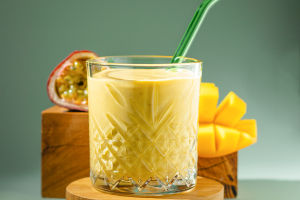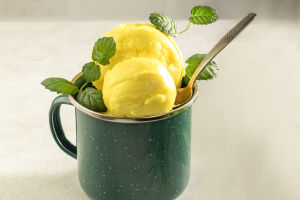KFC, one of the pioneering fast-food chains to venture into international markets, commenced its expansion in the mid-1960s. During this time, KFC established outlets in the UK, Mexico, and Jamaica.
However, the process of overseas expansion was marred by frequent ownership changes throughout the 1970s. In the early 1970s, KFC was sold to Heublein, which was subsequently acquired by the R.J. Reynolds Tobacco Group.
Finally, in 1986, KFC found stability in its ownership when it was acquired by PepsiCo, which helped address the issues of management disruption.
The dessert stations at KFC have evolved in response to changing consumer habits. Initially, they were small windows attached to the parent shops, offering a limited range of desserts. As time went on, the dessert stations transformed into independent shops with their own distinctive signage.
More recently, KFC dessert spaces have expanded to include dedicated product lines and seating areas.
From the earlier trend of "eating ice cream while walking" to the present preference for "savoring a waffle and a cup of milk tea," consumers' dessert consumption habits have constantly evolved. To cater to these changing needs, the KFC sweet dessert stations have undergone a makeover.
Embracing the concept of "dessert inspiration to create happiness and surprise," the newly upgraded KFC sweet dessert stations aim to provide more memorable experiences for young people and families.
The revamped KFC sweet shops boast a fresh style and a brand-new look. They embody the vibrant visual impression associated with the main KFC brand. The predominant color, red, is now hotter, more stylish, and eye-catching, allowing diners to feel the warmth and enthusiasm emanating from every aspect of KFC.
Approaching a KFC sweet dessert station, one can't help but be captivated by the bright and simple light signs and the clear menu boards, which reflect the sincere efforts made by the newly upgraded fast-food dessert stations to cater to consumer preferences.
Simultaneously, the lively and bright ambiance of the KFC sweet dessert stations offers a visually pleasing experience for young customers and fuels children's imaginations with the promise of delightful flavors.
In line with the overall upgrade, the staff uniforms at KFC Sweet will also receive an update. Whether in terms of the establishment's hard furnishings or the finer details, the completely renewed and upgraded dessert stations strive to deliver more happiness and surprises to consumers, with more delightful discoveries waiting to be made.
One of the extraordinary taste experiences awaiting consumers is the "Caramel Hokkaido Ice Cream." Crafted from Hokkaido's high-fat milk syrup and a carefully tested caramel sauce, this product offers a sweet and slightly bitter taste with rich layers of flavor.
Additionally, new flavors such as popcorn and pearl have been introduced. These flavors combine 84% cocoa content Belgian black chocolate and hazelnut ice creams with fancy toppings, creating a delectable symphony of flavors.
Moreover, the menu at KFC sweet dessert stations now includes new offerings like the Dahlia Cone, in addition to the original favorites such as Coconut Golden Mango, Durian Golden Mango, Black Gold Pop, and Coconut Berry. With such a diverse array of choices, consumers can always find the perfect ice cream to suit their taste preferences at the KFC sweet dessert station.
KFC's international expansion faced numerous challenges during the 1970s due to ownership changes. However, stability was achieved when PepsiCo acquired the company in 1986.
The dessert stations at KFC have evolved over time to meet changing consumer habits and preferences. The upgraded KFC sweet dessert stations offer a new and visually appealing experience, aiming to bring happiness and surprise to customers.


